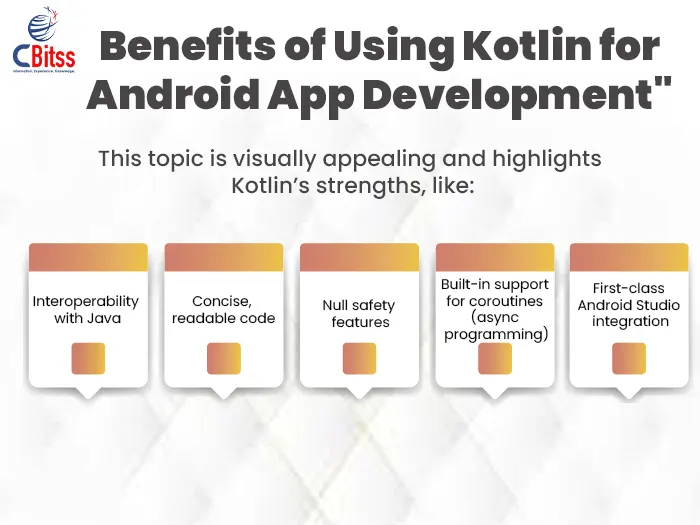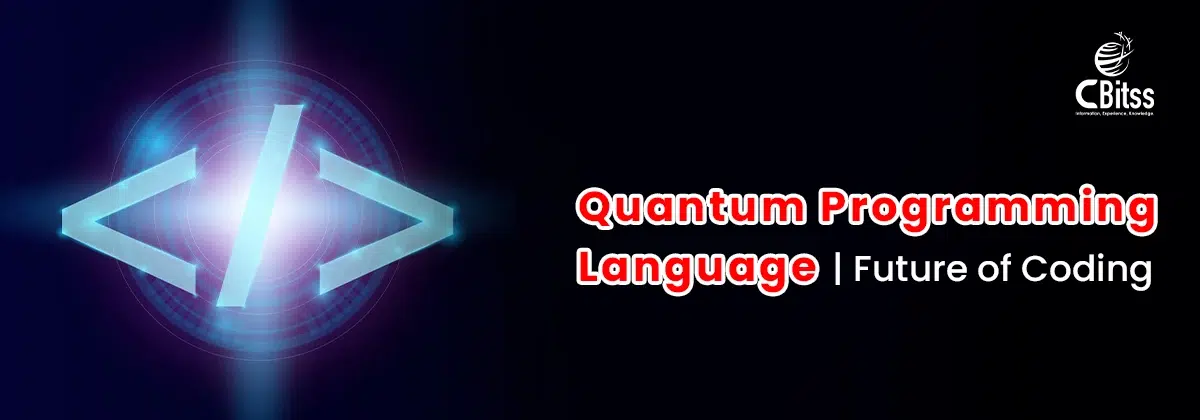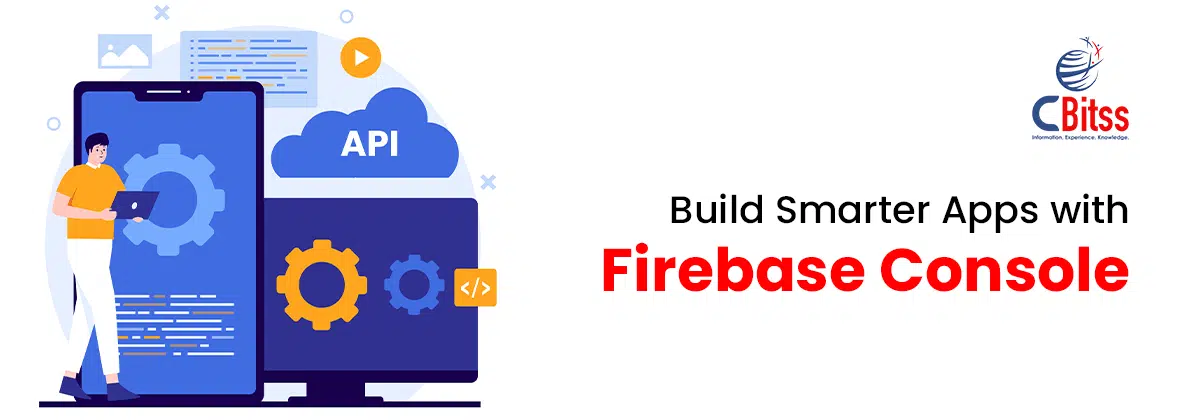Table of Contents
ToggleIntroduction
Kotlin is now becoming an exciting option for application development in the Android environment. Since it is idiomatic, has interoperability with Java, and has powerful features, it has become the best choice for developing reliable and optimal solutions. In this detailed reference, we will learn about Kotlin app development step by step, essential ingredients in Kotlin apps, and some of the newly introduced techniques in Kotlin.
Getting Started with Kotlin
The Kotlin programming language is easy to master because of its simplified structure of code structure and because it can be easily implemented even by a learner or a programmer of any level. Presently, Kotlin has integrated support from most of the IDEs, like IntelliJ IDEA and now Android Studio, making it easy for developers to set up a Kotlin environment. Next, in a typical program development process, the basics of Kotlin are based on such key programming concepts as variables and data types, functions, etc.
Many learners now start their journey with Kotlin as it aligns well with popular web development languages, helping them bridge both mobile and web environments easily.

Kotlin Fundamentals
The object-oriented programming is a core part of Kotlin and its most evident factors include classes, objects, inheritance, interfaces. Kotlin can be shorter than other languages and produce less code that’s simply boilerplate, whilst its null safety reduces the chance of Null Pointer Exceptions. Derek really liked the paradigm that Kotlin uses and that the language is designed to produce healthy and clean code.
Developers with background in networking and those who learn IP and routing often find Kotlin’s modular structure useful in crafting network-aware Android apps.
Functional Programming in Kotlin
Kotlin is designed for a functional programming style with the possibilities of using higher-order functions, lambda expressions, and not modifying data. By using basic library functions such as map, filter, and reduce, one can accomplish multiple operations on a collection with ease in Kotlin. Kotlin supports functional programming methodology which allows for creation of smaller and reusable components of code, thus making the code more efficient and easy to understand.
As functional programming becomes increasingly relevant, Kotlin’s adoption is now encouraged in even advanced cyber security classes for writing safe and modular scripts.
Asynchronous Programming with Kotlin Coroutines
Shared-state concurrency is frequently used in today’s application development. Kotlin coroutines are one of the perfect options for that. Coroutines allow developers to use asynchronous programming paradigms with sequential, imperative code, avoiding call stack limitations and escaping the nested callback structure. Using functions, it is quite easy to execute operations that go beyond the main thread, such as network requests or I/O access to disk, without interrupting the flow.
Coroutines are now also being explored in courses covering the working of cloud computing due to their relevance in distributed systems.
Building Android Apps with Kotlin
This is true since it not only gives us a basic view of the Android operating system and its development but also lays the foundation to building Android apps with Kotlin.
Kotlin is a language for Android application development that provides syntax and runtime compatibility with the Java language. Android Studio provides first-class support for the Kotlin programming language, which allows developers to embrace applications with a great, attractive UI with the help of XML layouts and Kotlin. In Kotlin-based applications, view classes and event handlers process user input in the typical fashion supported by Android. Kotlin’s language features also make navigation logic manageable.
New training modules like Best Kotlin training Chandigarh now guide freshers and professionals in designing smarter UI apps and feature-rich mobile applications.
Discover seamless app development with Kotlin for faster, scalable mobile performance.
Kotlin for Multiplatform Development
Kotlin Multiplatform Mobile, or KMM, is an interesting concept that has started a new trend in the development of apps for two major mobile platforms- Android & iOS. During development work, you use a unique approach by creating business logic and part of the networking code once in Kotlin. The libraries generated by KMM then allow you to use this code for both platforms. Taking advantage of the various APIs available for each of the platforms, it is possible to realize real native user interfaces that are native to the various platforms as well as reuse much of the code.
Developers looking to integrate Kotlin KMM with Cisco certification job roles can create hybrid dashboards that manage network-based apps on both iOS and Android.
Kotlin for Backend Development
Kotlin is not an exclusive Java framework just for developing mobile applications; it is also increasingly popular among backend developers. You might have heard about or used frameworks such as Ktor, which offer a decent-grade REST API and web toolkit for Kotlin. Working with databases turns out to be very simple when using Kotlin with libraries like Exposed or Hibernate due to the great number of libraries and framework for Kotlin. Kotlin’s concise and efficient type system and the range of features and tools provided allow you to create large, high-performance backend services without much effort.
As backend Kotlin is growing, professionals taking up careers after Linux course certification are also beginning to use Kotlin in DevOps pipelines and database scripting.
Create powerful Android applications using Kotlin for reliable, efficient code structures.
Testing and Debugging Kotlin Apps
A collection of tips and tricks that will be useful when you’re testing and debugging Kotlin applications.
Writing tests is crucial for the proper identification of issues with Kotlin apps, and as well, to guarantee the quality and stability of these apps. The fact that Kotlin integrates well with frameworks such as JUnit, Unit, Mockito, among others means there is a seamless approach towards unit testing, integration testing, and mocking of codes. The debugging of a Kotlin application in Android Studio or IntelliJ IDEA is easy and effective as there are powerful debugging tools, and the option to evaluate and interact with the code line by line. This way developers are able to locate bugs and fix them early enough in the development process and make sure that the applications that they are posing are solid and have no glaring bugs that can make them disappoint the user.
Kotlin Best Practices and Tips
Here are the Kotlin best practices and tips which will make developing in this language more pleasant and efficient.
- It is crucial to be producing clean code that developers themselves will be able to maintain in the long run in Kotlin app development.
- Staying compliant to best practices such as naming conventions, organization and even error handling is all fundamental practices that would enhance code readability and reusability.
- Some of the performance optimization strategies include ability to use inline functions and avoid creation or unnecessary objects to enhance the app performances.
- Emulating the common conventions and integrating into set practices and methodologies, developers can write clean Kotlin code free of mistakes and hard-coded flaws, as well as easy to comprehend and modify. Best way to know more join Android Training in Chandigarh.
- Kotlin testers also benefit from having knowledge of Top CCNA course institute, especially when debugging apps that interact with enterprise networks.
- Moreover, many developers who understand why learn Linux OS find Kotlin to be extremely compatible with open-source project pipelines.
Conclusion
Kotlin, therefore, is not just a coding language but an efficient and powerful platform in creation of today’s and tomorrow’s applications. Regardless of whether you are just getting into Kotlin’s syntax and basic structure or if you want to take advantage of Kotlin’s features to enhance your application, the current time is perfect to begin with Kotlin app development. By learning Kotlin’s syntax, using its hierarchical functions, and integrating best practices, developers can fully leverage Kotlin to create great applications, resulting in additional benefits for users and business success.

J. Julia Kamei is a professional content writer with 4+ years’ experience creating impactful content for clients in the USA, India, Canada, the UK, and Europe. An M.A. History graduate, she specializes in immigration, business, IT, digital marketing, AI, and Data Science. She also mentors students for international education and research.







